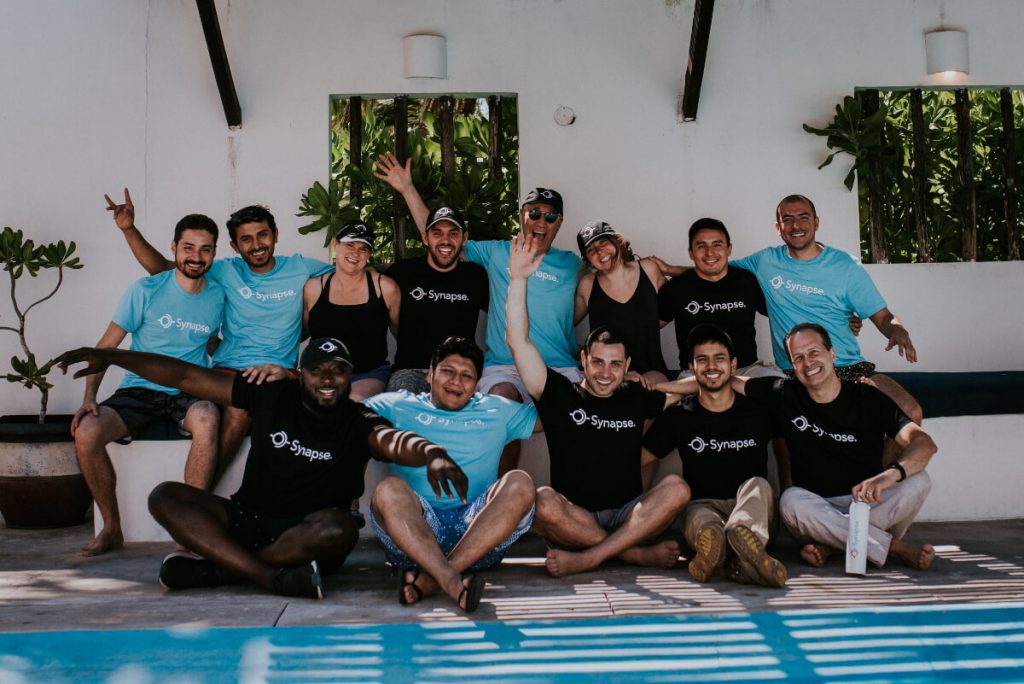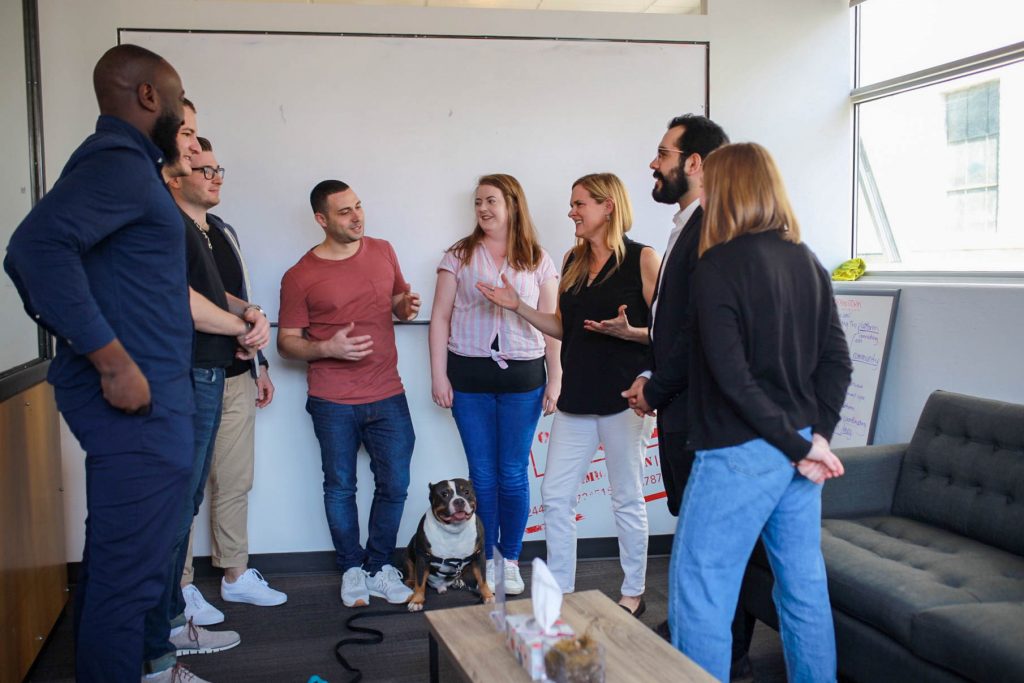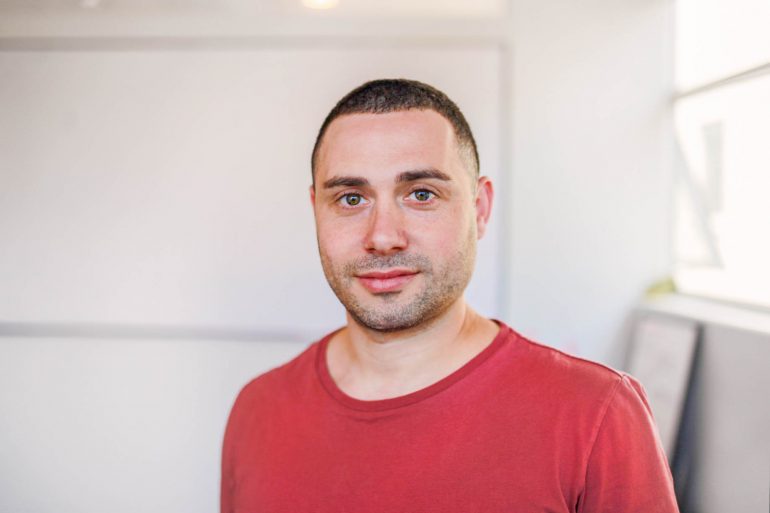The ‘Startup Growth Series’ showcases stories of entrepreneurs that have overcome obstacles in order to expand their businesses in Canada and abroad.
For any early-stage startup, losing a key team member can be a problem. If that person is a co-founder, the results can be devastating. Synapse’s Ryan Austin experienced losing a co-founder not once, but twice. Here’s the story of how the company rebounded with a lot of work and a strong game plan.
“A couple good problems.”
Initially founding a professional services firm for corporate education, Austin realized there was no technology to help with curriculum development that also complied with IACET regulation, the accreditation body for continuing education. Along with his two co-founders, Austin saw an opportunity.
“When we started [building] product, I ended up winding down the service company,” said Austin. “We went back to bootstrapping.”
To get the product going, Austin initially outsourced engineering to Poland. At the same time, Synapse joined an accelerator in Houston, Texas, to help transition the company from services to tech. It turned out the move was both the catalyst for Synapse’s growth and the decision that would eventually split up the co-founding team.
The inciting incident came in the form of some local news coverage, which happened to be read by a Fortune 10 company.
“They said they wanted to see our software,” Austin said. “We said we didn’t have software [at the time], but I can explain how we’re going to develop it. So we came to their office and pitched it. They ended up giving us $100,000 to help us co-develop the product.”
The financing was a huge win for a company in transition, which was not lost on Austin.
“I had a couple good problems,” he said. “One was that we sold our first enterprise client for software, but we had no software. So we did an angel round for $750,000 in January 2016, basically to do R&D and build the product. The second problem was that I was in Texas, so I extended my stay and got a visa. My wife eventually moved over too, which meant saying goodbye to Toronto.”
The one-two punch
Following the funding, Synapse worked out of office space in Houston provided by its investors, because it was closer to the company’s new client. Once product development got going, however, the team chose to move to Austin, Texas, which the founder described as a “cool place to build a tech company.”
“We stayed there [Austin, Texas] for about a year,” said Austin. “During that time we had a pretty significant R&D team in Poland and Houston. We were developing software out of Poland and Houston. We needed to ramp up engineering to get the product built, but burn was high.”
“We built a team before we built the product.”
In the first attempt to curb burn, Synapse moved offshore development from Poland to “near-shore” in Mexico, and eventually made the decision that all engineering would operate out of Mexico. It wasn’t enough.
“We had to downsize – to right-size where the company needed to be,” explained Austin. “We raised $750,000 but we were not ready to raise venture capital because we didn’t have the revenue yet.”
The team “rolled up their sleeves and got to work,” but burn rate remained an issue. It became clear that Synapse would need to make cuts in order to continue building the product. As Austin described it, he and one co-founder had similar skill sets, so the two agreed that Austin would remain and the other would return to Toronto.

One co-founder leaving gave the team a reprieve, for a time.
“I just rolled up my sleeves and did sales, client success, and marketing for that year,” Austin said. “We grew the company to about a half million dollars (USD) in recurring revenue. We also started getting good metrics, good logos, and renewals.”
It was around that time that the company learned Austin, Texas, was not exactly a cool place to build an EdTech company. “The data told us to go to New York City or Toronto,” Austin said. “We chose Toronto and joined the DMZ.”
The decision led to Synapse losing its second co-founder.
“My co-founder was initially supposed to move to Toronto with us, but then decided with his wife that they were not going to go,” said Austin. “So it [went from] three co-founders down to one.”
Austin said all three co-founders are on good terms, with each departure happening amicably. But the second co-founder to leave was also Synapse’s technical lead, so the team relied on its CPO, Mark Hellinger, to pick up the slack.
“We built a team before we built the product,” Austin said. “So there was some mismatch with certain things and we had to make really hard decisions along the way to align what type of talent we need to continue to grow the company. But as a young company, nobody wants to do those things.”
A strategic rebuild
As Synapse entered the DMZ, Austin spoke with Mary-Ann Dunlop, the accelerator’s entrepreneur-in-residence (EiR) focused on talent. She immediately noted the lack of a proper technical leader as a “red flag” and quickly introduced Austin to her strategic talent framework, helping him to realize he wasn’t capable – nor should he be – of doing everything.
“[Founder CEOs] need to learn they are no longer individual contributors or executives; they are the leader.”
“Most CEOs don’t have the competency to handle everything – but they shouldn’t,” said Dunlop.
The framework Dunlop introduced to Austin began with articulating the company’s mission, vision, and values. Dunlop said that startups, especially with eager founder CEOs, often prioritize operations over strategy, something that she does not recommend.
“[Founder CEOs] need to learn they are no longer individual contributors or executives; they are the leader,” she said.
Once startups have their mission, vision, and values clearly articulated, Dunlop then recommends:
- Identifying all deliverables needed to achieve their vision and the competencies necessary
- Creating a company-wide performance plan to achieve that vision
- Creating individual roles and performance plans for the people who will execute on the company plan
- Building 1:1 coaching for employees based on their roles, company performance, and deliverables
While Dunlop was helping Austin with the talent side – Synapse eventually transitioned the head of engineering role to Toronto, installing a senior leader to replace its second co-founder – he was also working DMZ’s marketing EiR, Kristy Sadler.
Sadler said she noticed how “coachable” Austin and the Synapse team were, which was music to her ears as an EiR for startups.
“I understood the problem he was solving because of my experience in the space,” she said. “I could tell that he was going to execute.”

At the time, Austin was still running both marketing and operations, so Sadler was initially supporting Synapse’s marketing strategy. However, she saw an opportunity to join the fledgling startup and jumped “without a parachute” because of her passion for the product.
“I could tell the product was amazing – and it solves a problem,” Sadler said. “And there were enough customers that were buying. You could tell product-market fit was there. I think because he came out at the other end of some really hard times that the commitment was there.”
While Sadler stayed on as a DMZ EiR, she joined Synapse just before the company finished its $3.3 million funding round, becoming the company’s the head of marketing.
With a new team in place, Austin has worked to ensure it is set up for success. Following guidance from the DMZ, the founder set up objectives and key results (OKRs) for Synapse, enabling visibility and transparency of the company’s goals. He then communicated those OKRs and established accountability during a company off-site.
Austin learned the hard way that hustle alone will not guarantee the pieces fall into place for a startup. Through his work at the DMZ, the founder learned to embrace his limitations, and build a plan for where Synapse was heading, and the kind of talent needed to make the journey successfully.
As Synapse moves forward, Austin said he is grateful for both the lessons he learned losing two co-founders and the people who joined to fill the company’s gaps. He remains a solo founder, but understands his role as the leader of a growing company, not just an operator.
“With startups, you still pivot along the way,” said Austin. “We’re just getting into big-bucket wins and accountability, and starting to run now.”


